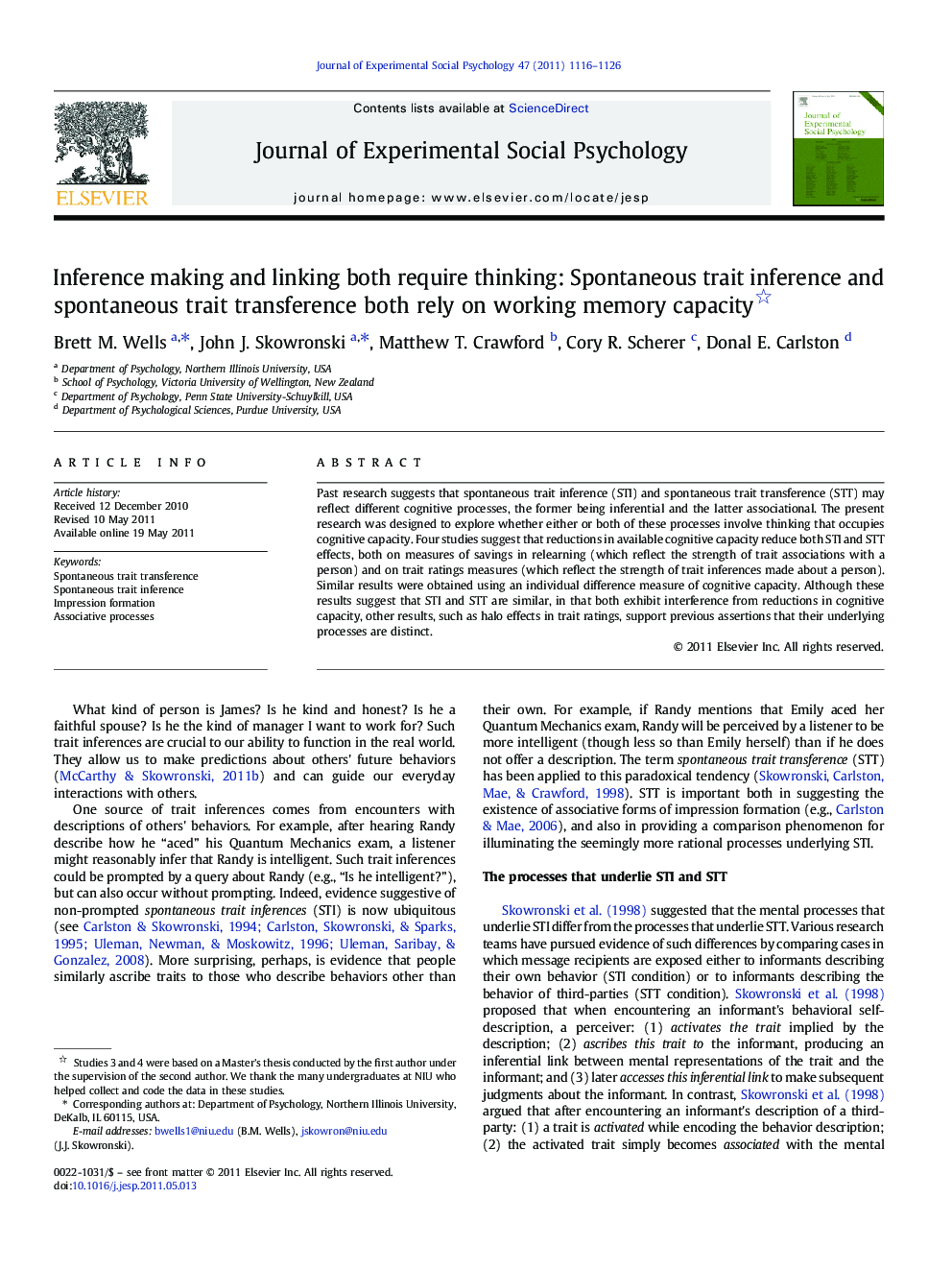| Article ID | Journal | Published Year | Pages | File Type |
|---|---|---|---|---|
| 947976 | Journal of Experimental Social Psychology | 2011 | 11 Pages |
Past research suggests that spontaneous trait inference (STI) and spontaneous trait transference (STT) may reflect different cognitive processes, the former being inferential and the latter associational. The present research was designed to explore whether either or both of these processes involve thinking that occupies cognitive capacity. Four studies suggest that reductions in available cognitive capacity reduce both STI and STT effects, both on measures of savings in relearning (which reflect the strength of trait associations with a person) and on trait ratings measures (which reflect the strength of trait inferences made about a person). Similar results were obtained using an individual difference measure of cognitive capacity. Although these results suggest that STI and STT are similar, in that both exhibit interference from reductions in cognitive capacity, other results, such as halo effects in trait ratings, support previous assertions that their underlying processes are distinct.
Research highlights► Cognitive load manipulation reduces both STI and STT effects. ► STI and STT effects are both dependent on working memory capacity. ► Halo effects in trait rating suggest distinct underlying processes for STI and STT.
